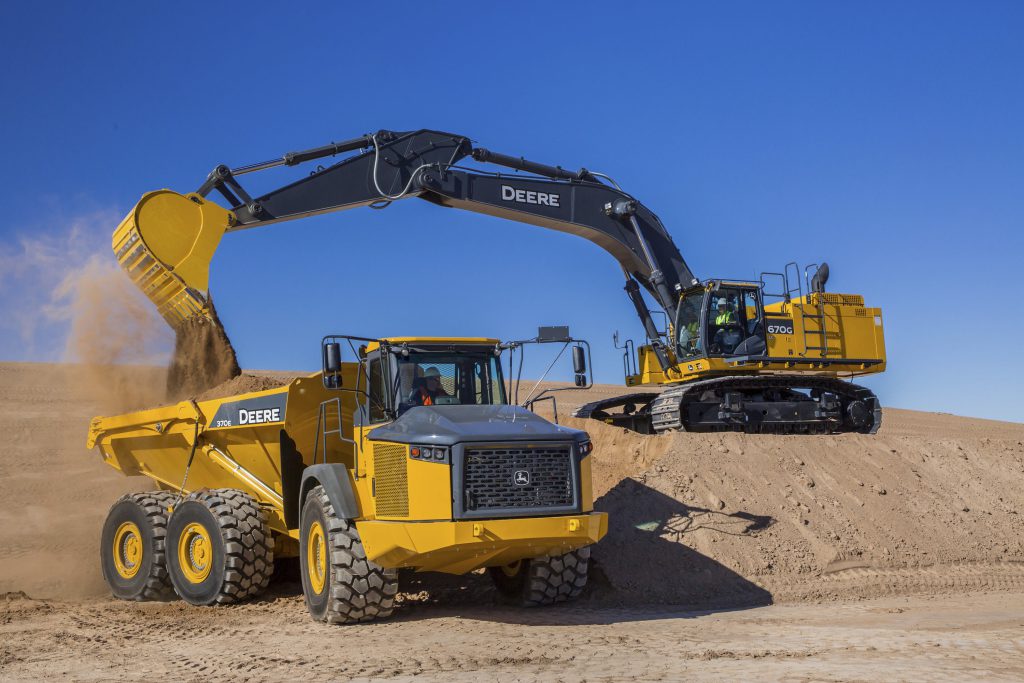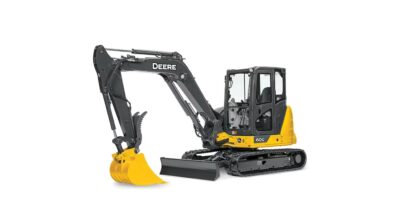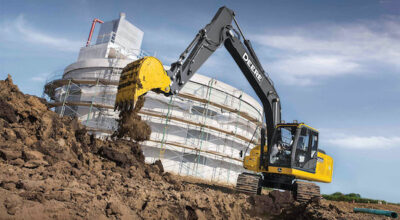While there are many safety features on John Deere excavators, there’s no guarantee they will always get the job done. Good judgment is always required to make full use of the features and ensure the safety of yourself and others around you.

Access the top performing equipment on the market. Explore our inventory of John Deere machinery!
How to Safely Operate An Excavator
Any time you operate equipment, it’s important to understand how you can maintain a safe work environment for yourself and those around you. Here are some excavator safety tips you should consider when putting the equipment to work.
How to Improve Excavator Safety
To ensure you are safely operating an excavator, check that the excavator is outfitted with sufficient visibility to enable drivers to have a clear view of areas where people could be in danger due to the operation of the equipment. Preparing and checking any and all safety features before operating an excavator is key to improving overall safety.
5 Excavator Safety Tips: Before Operation
Before starting your excavator, consider the following safety tips to ensure you are fully prepared for operation:
- Tip #1: Seat belts are provided for comfort and security.
- Tip #2: Before going to work, be sure the mirrors are clean and set properly.
- Tip #3: Make a quick check of the controls. Be sure the control levers are operating properly.
- Tip #4: Check the propel system. It’s better to do this before operating so you can prevent accidents on the job.
- Tip #5: Call the area’s utility services to have the job site marked for underground lines or structures.
18 Excavator Safety Tips: During Operation
Once you’ve completed the before-operation excavator safety tips, continue with the following:
- Tip #1: Never permit riders in the bucket, cab, or anywhere else on the machine. Excavators only have one seat, which is meant for the operator.
- Tip #2: Never attempt to operate the excavator unless you are sitting in the seat and in full control.
- Tip #3: Reduce the excavator’s speed when working on rough terrain or within congested areas.
- Tip #4: Carry the bucket low to the ground during transport. This will increase visibility and machine stability.
- Tip #5: When moving the excavator around the job site, select a route that is as flat as possible. Steer the machine as straight as possible and only make small gradual changes in direction when turning is needed.
- Tip #6: Travel directly up slopes vertically instead of diagonally.
- Tip #7: When propelling up slopes, the boom and the arm should be extended with the bucket carried low and rolled out. This will allow you to drop the bucket and prevent the equipment from sliding if necessary.
- Tip #8: When propelling down a slope, the bucket bottom should be low and parallel to the ground.
- Tip #9: In very steep or slippery conditions, you can use the boom and arm to help move up and down the slope. When going up a steep slope, extend the boom and arm, and when needed, lower the bucket and retract the arm to help pull the machine up. When traveling down a steep slope, position the bucket with the flat surface resting on the ground. While retracting the arm, raise the boom and propel the machine until the front of the tracks reach ground level.
- Tip #10: When using the excavator for trenching, make sure the machine is level by placing dirt underneath the tracks. Being level will make the trench vertical and will help to avoid cave-ins.
- Tip #11: For better stability, work with the propel motors to the rear of the machine.
- Tip #12: Dump spoil piles as far away from the excavation as possible to avoid cave-ins.
- Tip #13: When doing excavation jobs on slopes, level the machine by digging a shelf (or bench cut). Material removed from the upper slope can be used to build up the lower slope and create a level surface.
- Tip #14: On steep bench cuts, cut enough away from the upper bank to allow for adequate swing clearance when casting downslope.
- Tip #15: Never dig underneath the excavator.
- Tip #16: When backfilling a cave-in, the excavator’s tracks should be at a 90-degree angle to the excavation with the propel motors to the rear of the machine.
- Tip #17: When loading trucks, never swing the excavator bucket or the truck cab. By swinging over the rear of the truck, any loose materials will fall on the ground or in the bed, rather than on the cab.
- Tip #18: Never attempt tothe clean the excavator’s bucket by striking it on the ground or against another object.
4 Excavator Safety Tips: After Operation
Finally, once you’ve safely performed your day of work, consider the following post operation safety tips:
- Tip #1: When shutting down the unit, be sure it’s parked on a level surface with the bucket attachment lowered to the ground.
- Tip #2: Turn off the auto-idle switch and run the engine at half throttle without load for a few minutes to help cool the turbocharger down.
- Tip #3: Set the RPM to low idle before shutting the engine off with the key switch.
- Tip #4: Don’t forget to lock up the cab when exiting the equipment.
Final Thoughts
Don’t forget to keep these safety tips in mind the next time you start up your excavator for a day of work. For more information about John Deere excavators and operating them safely, contact your local John Deere dealer today.
If you enjoyed this post or want to read others, feel free to connect with us on Facebook, or Twitter!




